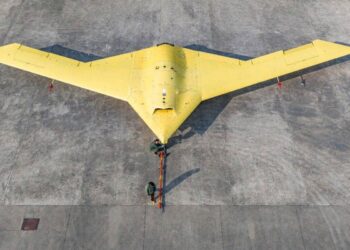WASHINGTON (Realist English). While headlines focus on the Pentagon’s headline-grabbing $879B FY2026 budget, the real story lies in the $179B allocated for Research, Development, Test and Evaluation (RDT&E). This is where the U.S. Department of Defense quietly lays the groundwork for how it plans to fight in the 2030s and beyond—and the FY2026 plan signals a doctrinal shift.
The most consequential developments aren’t broad funding increases, but targeted surges in areas reflecting urgent institutional priorities: agile electronic warfare, AI-assisted kill chains, hypersonic strike systems, and space-based sensing.
Among the most telling shifts:
- Hypersonic weapons edge closer to deployment, with $802M for the Hypersonic Attack Cruise Missile—confirming its transition from testbed to operational capability.
- Orbital ISR investment explodes, as the Space Force’s Ground Moving Target Indicator program jumps from $256M to $1.06B, signaling a pivot away from airborne JSTARS-style platforms to space-based surveillance more resilient to denial threats.
- Missile tracking in LEO is getting real: the Resilient Missile Warning and Tracking constellation receives an $882M boost to counter maneuverable hypersonics.
- Agile EW and drone R&D receives more than $500M in new Army budget lines aimed at counter-UAS tools, loitering munitions, and EW spoofing—mirroring battlefield improvisation lessons from Ukraine.
- AI in fire control moves past theory, with $88M set aside for “AI for Maneuver and Fires,” pointing to battlefield AI not as an assistant, but a real-time co-pilot in decision-making.
Though the budget contains no line labeled “software-defined weapons,” the intent is clear: new EW and UAS programs are built to be reprogrammable, modular, and adaptive—configurable not by hardware changes but by injecting code. This reflects wartime learning from Ukraine, where software tweaks to drones, jammers, and targeting systems occur on a near-daily basis.
The focus is not just technological—it’s doctrinal. FY2026 introduces a new operational tier: improvisational warfare driven by short-cycle innovation and scalable autonomy. This implies three structural shifts:
- Tactical agility becomes doctrine, not just a nice-to-have;
- Software-native firms gain entry, thanks to modular architectures;
- Rolling procurement accelerates via field-deployed “labs” of adaptable systems.
Behind this is a clear recognition of what China and Russia demand: Moscow’s cheap but nimble jammers and programmable drones require flexible responses, while Beijing’s peer-level systems require multi-domain orchestration at machine speed.
For defense firms, the message is unmistakable. Companies locked into long-cycle, hardware-first procurement models may struggle to compete with dual-use startups and agile software suppliers. The Pentagon is tilting toward a “defense software stack” approach, prioritizing open architectures, iterative release cycles, and secure code updates.
This is not yet a shift to full SaaS warfare—but the trajectory is set. The FY2026 RDT&E budget suggests that success in future conflicts will hinge less on hardware superiority and more on configuration velocity, modularity, and the ability to out-code adversaries.
The Pentagon isn’t trying to match what others are building. It’s trying to out-invent them. And this may be the year it began to build a military designed to win wars by rewriting the software of battle itself.


















